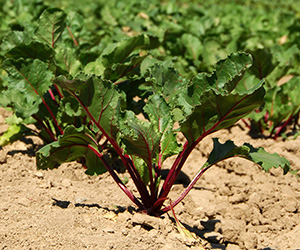Beets

Beets (Beta vulgaris) are highly nutritious vegetables that are easy to grow. They are identical to Swiss chard in nomenclature, but the difference is that beets are grown for their tasty taproot instead of for their greens (although you can eat the greens too). Beets are native to parts of Europe, the Middle East, and Africa that border the Mediterranean Sea.
Good varieties to try in the home garden are ‘Chiogga’, ‘Early Wonder’, ‘Detroit Dark Red’, ‘Cylindra’, ‘Little Ball’, ‘Asgrow Wonder’, ‘Green Top’, ‘Pacemaker III’, and ‘Red Ace’. Golden beet varieties are available as well if you want to grow something unique.
Planting and Care
Depending on where you live in Florida, you can start planting as early as August and as late as February. This large planting window makes beets the perfect candidate for succession planting. By staggering your planting dates throughout the window, you’ll extend your harvest for months.
Beet Planting Dates
- North Florida: August – February
- Central Florida: September – February
- South Florida: October – January
Beets prefer well-drained soil with high organic content. Thinning will be necessary, so overseed your rows with seeds one inch apart and plant them one half to one inch deep. Rows should be 12 to 30 inches apart. Once your seedlings have sprouted, thin them to two to four inches apart.
If you prefer, you can also start your seeds in trays and transplant them once they are four inches tall. Either way, you can protect your young seedlings by “hilling up,” or gathering soil around them. This practice strengthens the plant and protects the root from sunlight, which keeps it tender.
Make sure your plants get plenty of water to encourage sprouting and aid root development. You can begin fertilizing once the second set of true leaves emerge. However, check with your county Extension office and/or complete a soil test first to see if fertilizer is necessary and how much to apply.
From seed, your beets will be ready to harvest in 50 to 70 days. If you find yourself with a plentiful harvest, you can try freezing, pickling, or canning your beets to enjoy them year-round.

